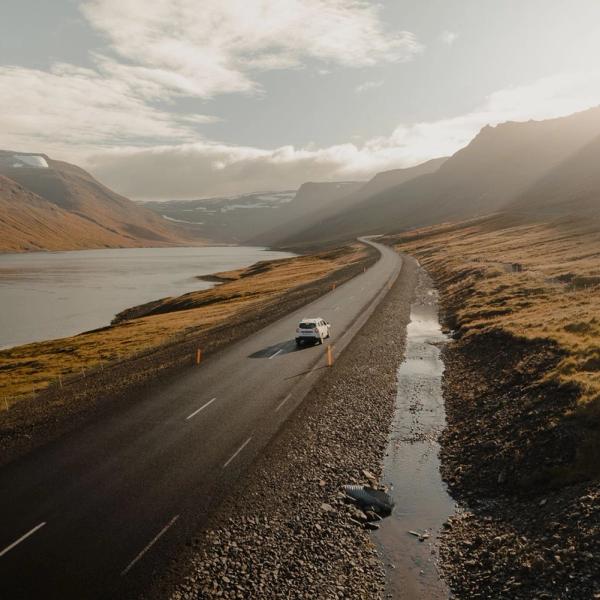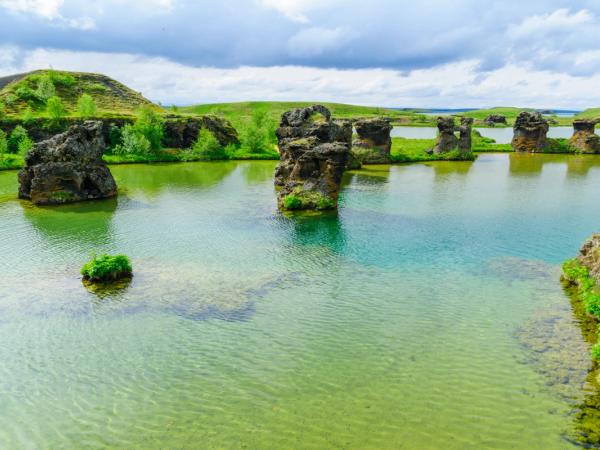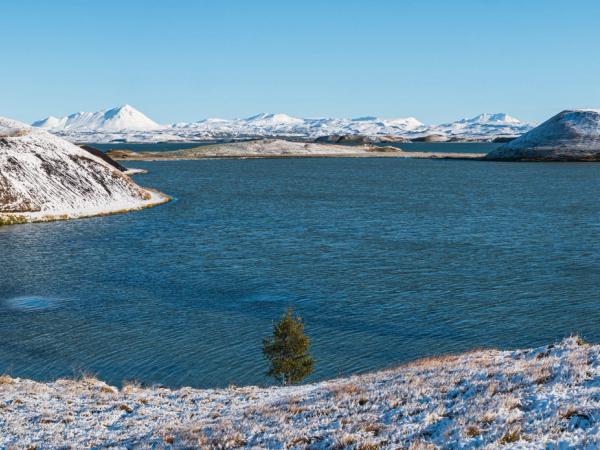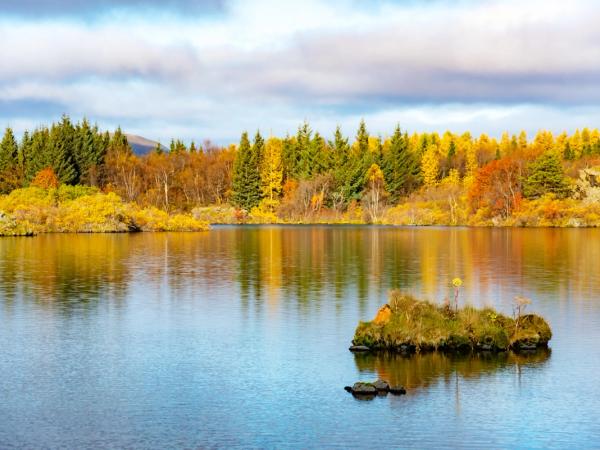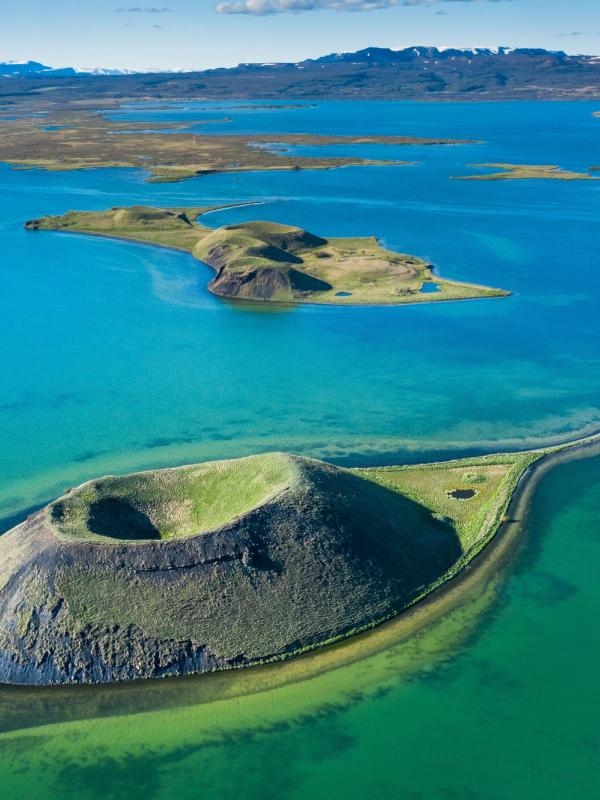
Lake Mývatn: An astonishing volcanic landscape in North Iceland
Many travelers come to Iceland in hope of seeing the varied and amazing landscapes that can be found in the country. Most of the people who make their way up north to this country want to witness how the raw and powerful forces of nature have shaped the land. And, luckily, this kind of place can be found all over the island. However, certain areas combine a bit of everything. One of them is Lake Mývatn, in North Iceland. This lake of volcanic origin has craters, steaming baths, rare birds, and views that seem for another planet. And not only that, but it’s also part of one of the best tourist routes in all of Iceland.
Key Takeaways
- Mývatn is a lake of volcanic origin located in North Iceland.
- It’s one of the main stops of the Diamond Circle, a fantastic scenic route.
- Lake Mývatn is a fantastic spot for bird watching, and is home to rare ducks.
What's Lake Mývatn?
Lake Mývatn isn’t just a body of water—it’s a living showcase of Iceland’s wild, volcanic spirit. Formed over 2,300 years ago during a massive eruption, this shallow lake stretches across 37 square kilometers. The color of the water is astonishing, with vibrant hues of blue and green. The same applies to the land around the lake, created by mineral deposits. The landscape around it is a surreal mix of lava fields, moss-covered rocks, and steaming fissures, with the presence of Krafla volcano to the northeast.
Historically, the lake has been a quiet witness to Iceland’s volcanic past. Drastic eruptions hundreds of years ago created this unique ecosystem, but is now a peaceful example of how volcanoes have played a part in shaping Iceland. Some volcanic areas in the country are still active, but Mývatn no longer is. Today, it’s a haven for adventurers and nature lovers alike. There are several hiking trails in the area to explore, everything from up close, like the one around the Hverfjall crater, a towering ring volcano with sweeping views of the lake below.
Even though the area surrounding the lake might seem barren, it’s full of life. Lake Mývatn is one of the prime spots in Iceland for birdwatching. There are several species that live or migrate to the lake’s shores, including more than 15 species of ducks. And, if you’re into photography, the lake presents countless opportunities for great pictures. The different light atmospheres in a single day or across the seasons create amazing frames for photos.
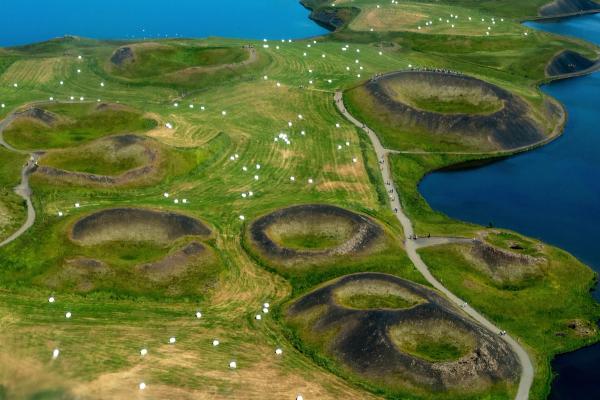
Why is Lake Mývatn Worth a Visit?
What sets Lake Mývatn apart is its ability to blend the strange and the beautiful into a single, unforgettable experience. Here’s why it deserves a spot on your Iceland itinerary:
Geological Wonders
This is a playground for anyone fascinated by the Earth’s inner forces. The pseudo craters scattered across the lake are a rare sight. They were formed when lava met water and cooled down rapidly, creating strange formations in the process. When walking in the area, you’ll also find lava fields, bubbling mud pots, and steam vents. It’s a place of high geothermal activity.
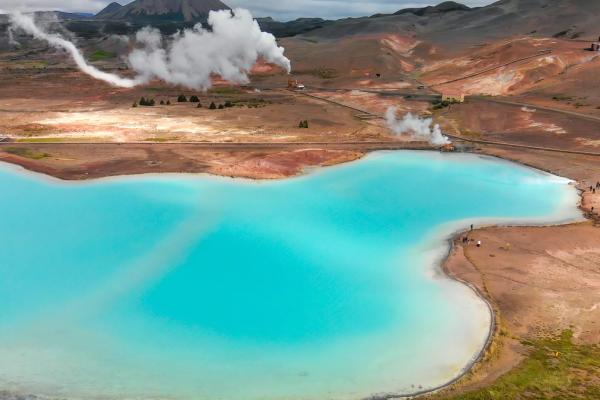
Wildlife
The calm waters of Lake Mývatn are the habitat of a high number of animal species, especially birds. Summer is the best time to see them, as the wetlands around the lake become a wildlife spectacle, with arctic terns, common snipes, and tufted ducks. It’s pretty common to spot some other waterfowl there.
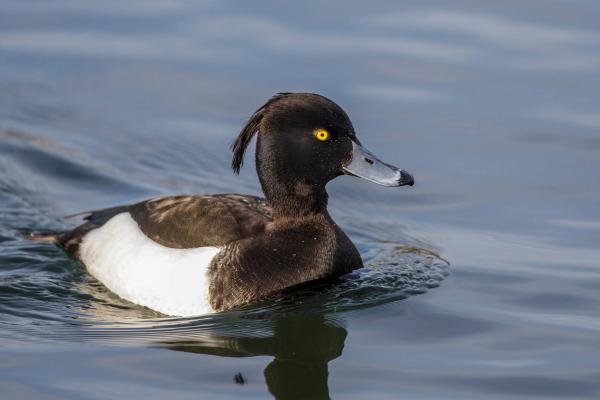
Mývatn Nature Baths
Many travelers who come to Iceland have geothermal bathing on their bucket list. And, luckily, that’s something you can also experience in Lake Mývatn. After a day of exploring, there’s nothing better than sinking into the warm, mineral-rich waters of the Mývatn Nature Baths. Often dubbed the “Blue Lagoon of the North,” this geothermal spa, with its milky-blue pools, offers relaxation and unbeatable views. It’s less crowded than its southern counterpart, making it a peaceful retreat.
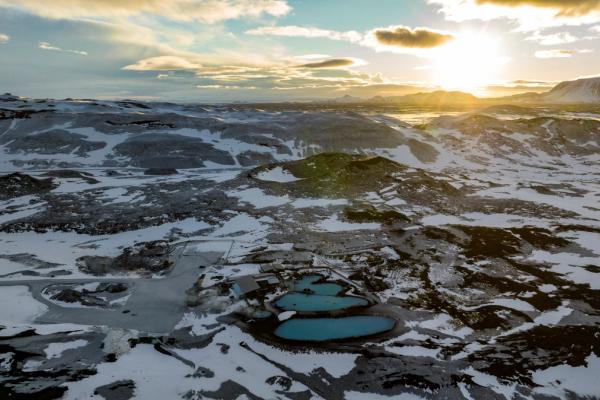
Where's Lake Mývatn and How to Get There
Lake Mývatn lies in northern Iceland. It’s a bit far from Reykjavik, but it is an easy stop to add to an itinerary through this amazing region.
Here’s how to reach it by car:
From Reykjavik: The capital is about 475 kilometers (295 miles) away, and it takes between 5 and 6 hours to get there by car, depending on conditions. Take Route 1 (the Ring Road) heading north, towards Akureyri, the main city in North Iceland. After Akureyri, continue on Route 1 for another 90 kilometers until you spot signs for Lake Mývatn. It’s hard to miss, as the lake is just by the road. The road is well-paved, but winter travelers should check for ice or snow.
Parking is straightforward at most sites around the lake. There are several places where you can leave your car and start exploring on foot. For instance, the Mývatn Nature Baths has a spacious lot right by the entrance.
Renting a car is the best way to explore, as public transport is limited in this region.
The Weather at Lake Mývatn
Lake Mývatn’s weather is as wild as its landscape, swinging hard with the seasons. That’s something that happens in all of Iceland, though. The north of the country is, in general, a bit colder than the west and south, but it rains less and is not as windy. Here’s what you can expect season by season.
Spring (April and May)
Things are just starting to wake up after the long winter, with temps ranging from 0°C to 7°C (32°F to 45°F). Snow’s melting, leaving behind muddy trails and patches of green. Many migratory birds return, and the wetlands around the lake get full of life. Rain showers are common, and winds can be strong in the open plains. Days get longer by the week, getting up to 17 hours of natural light per day by the end of the season.
Summer (June to August)
This is as good as it gets, with highs of 10°C to 15°C (50°F to 59°F), sometimes reaching 18°C on a warm day. Lake Mývatn is not far from the Arctic Circle, so the sun barely sets by the summer’s solstice, giving plenty of time to explore. Rain is less frequent than in spring, but occasional showers or drizzles are not rare, with moments of light breeze. The only low point is the presence of midges. Those tiny bugs swarm in calm, warm weather, especially near the lake. They’re harmless but can be a nuisance.
Autumn (September and October)
Things cool off to 3°C to 10°C (37°F to 50°F), and the landscape changes its colors, with tones of gold, brown and red. Rain picks up again, often with gusty winds that make it feel colder than it is. In general terms, it’s similar to spring, but going in the opposite direction: the days get shorter by the week, and there could be the first days of snow by mid-October. It’s shoulder season, so there are not many tourists. You’ll get quieter trails, but you’ll need to dress for wet, windy days and keep an eye on the forecast.
Winter (November to March)
Winters are harsh in North Iceland, with temperatures moving between -5°C and 2°C (23°F to 36°F), and it can get even colder at certain moments. Snow covers the region, making it look amazing, but the conditions for traveling are difficult. Some roads may even close for the season because of the weather, especially secondary roads. Daylight shrinks to 4 to 7 hours, but, on the other hand, this is the time with the most chances to see the Northern Lights.
Iceland’s weather is famously unpredictable, so always check the Icelandic Met Office or local forecasts before heading out, and be ready for anything.
What to Wear at Lake Mývatn
Packing well for a trip to Lake Mývatn can make the difference between a great and a not-so-good experience. Regardless of the season, there are a few things you should put in your suitcase.
- Waterproof Jacket: Rain or wind can hit out of nowhere. A solid waterproof and windproof jacket keeps you dry and happy.
- Warm Layers: Think fleece or wool, maybe thermals if you’re coming outside of summer. As the weather changes so much, dressing in layers is the best way to cope with the elements.
- Hiking Boots: Waterproof ones with grip are necessary to deal with the rocky trails and lava fields.
- Hat, Gloves, and Scarf: Even in summer, the wind can bite. In winter, they’re non-negotiable.
- Swimwear and towel: The Mývatn Nature Baths are a must if you come to this region.
- Insect Repellent: Summer midges are harmless, but can be a nuisance.
What to See and Do Near Lake Mývatn
North Iceland is a region full of astonishing natural monuments. It’s, perhaps, not as well-known and visited as other parts of the country, but there’s a lot to see and do. In fact, Lake Mývatn is one of the five main stops of the Diamond Circle, an amazing scenic route connecting some of the best in the north. But that’s not everything to it.
Dimmuborgir
This volcanic landscape is quite close to Lake Mývatn, just 10 minutes away. Dimmuborgir, whose name can be translated as “dark castles,” is a lava field with unique rock formations that seem like fortresses or castles from a distance, hence the name. It’s a labyrinth of lava formations, caves, and tunnels.
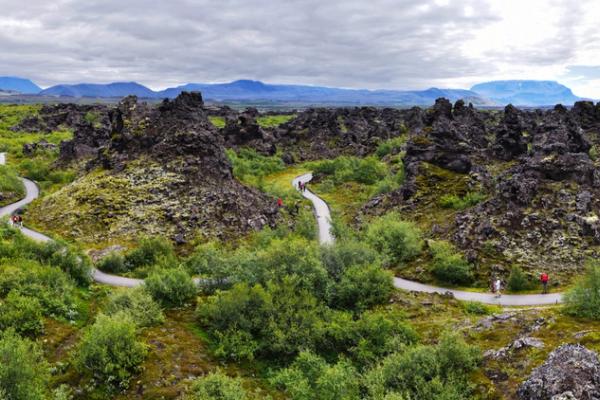
Grjótagjá Cave
This lava cave is small but really beautiful. It has a geothermal spring inside of a deep turquoise color. The water is too hot for bathing, but perfect for photos. It looks especially enchanting when the light filters by the cracks in the walls. Grjótagjá Cave gained international popularity as it appeared in the TV series Game of Thrones.
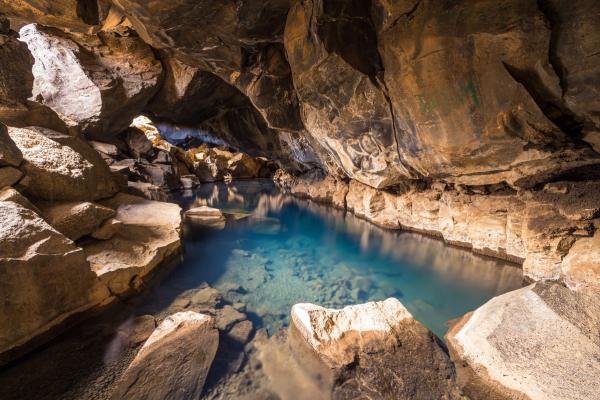
Dettifoss
Iceland is full of fantastic waterfalls, and Dettifoss is the most powerful of them all. “The Beast”, as nicknamed by the locals, is 44 meters (144 feet) high and 100 meters (328 feet) wide, dropping into a canyon. The roar produced by the waterfall can be heard from quite some distance. You can view it from both the east and west sides of the river, each offering unique perspectives and experiences. Nearby, you can also visit Selfoss and Hafragilsfoss, smaller but equally captivating waterfalls located upstream and downstream, respectively.
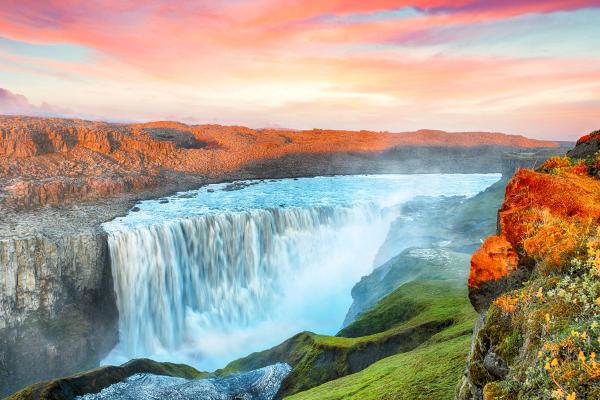
Ásbyrgi Canyon
This horseshoe-shaped canyon is one of the most striking natural locations in North Iceland. It was created thousands of years ago by glacial floods, but it has its place in Norse mythology. According to it, Ásbyrgi was created when Sleipnir, Odin’s eight-legged horse, struck the land here with its hoof. The rock walls reach up to 100 meters tall (328 feet) and there’s a birch forest and a little lake at the bottom. There are several trails to get to the different parts of the canyon.
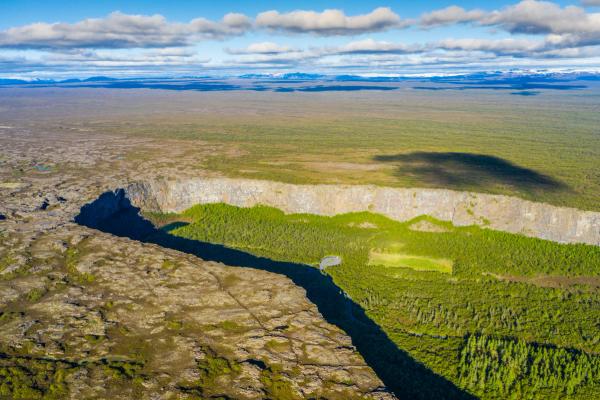
Húsavík
If you’re interested in whale watching, this is the place to go. Several companies operate boat tours from Húsavík’s harbor to see these giants from up close. Summer is the best time to see humpbacks, orcas, Minke whales and, if you’re really lucky, blue whales. The town is, in itself, quite charming, and can be used as a base to explore the Diamond Circle.
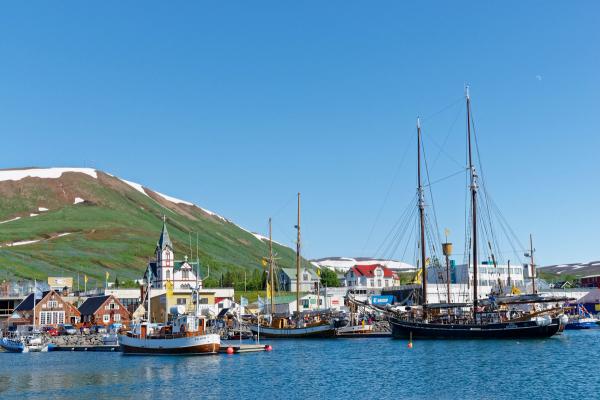
Goðafoss
Another waterfall that is part of the Diamond Circle, but a completely different look compared to the huge Dettifoss. Goðafoss, which means “Waterfall of the Gods,” is impressive but not in size. Its crescent shape and the color of the water are what impress visitors so much. The place also has an important historical significance, as it was here where, in the year 1000, lawspeaker and local chieftain Þorgeir Ljósvetningagoði decided to convert to Christianity. You can leave your car in the free parking area and then walk to the east or west viewpoints, each offering a different perspective.
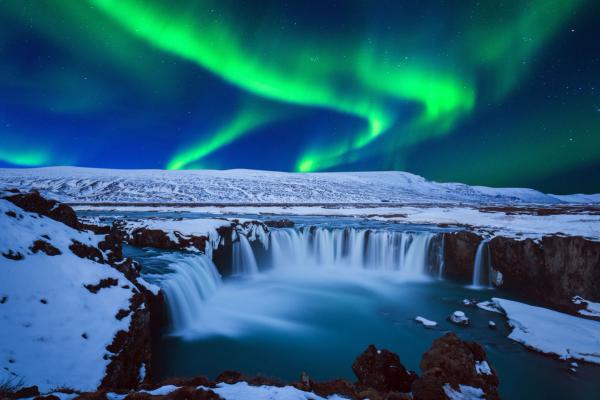
Forest Lagoon
This place is a bit far from Lake Mývatn, about one hour away, just outside Akureyri. The Forest Lagoon is a geothermal spa opened in 2022. It features two infinity pools filled with warm, natural waters sourced from the mountains. The pools are kept at 38°C to 40°C (100°F to 104°F). It’s less raw than Mývatn’s baths but super relaxing.
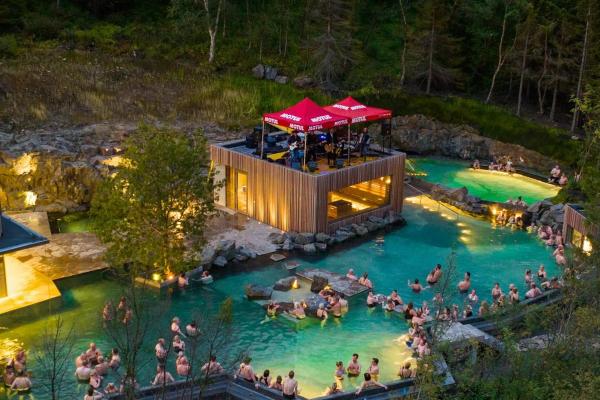
Where to Stay Near Lake Mývatn
If you’re looking for accommodation near Lake Mývatn, here you have a few options:
- Fosshotel Mývatn: It’s a modern spot with big windows and great lake views. The hotel is comfortable and nicely designed, and has a restaurant where they serve Icelandic food.
- Berjaya Mývatn Hotel: Very close to the lake. It has cozy rooms, hot tubs, and a restaurant.
- Vogafjós Farm Resort: This guesthouse is on a farm that has been operated by the same family for more than 120 years. It offers a rustic stay meters away from the lake.
- Sel-Hotel Mývatn: Basic but solid, close to the lake and baths. It’s a more budget-friendly option.
- Dimmuborgir Guesthouse: Just by the shore and close to the lava fields, you can stay in a private room or rent one of the cottages, which come with their own kitchen.
- Skútustaðir Farmhouse: Cheap and cheerful with shared kitchens and a laid-back feel. Good for groups or solo travelers.
Travel Tips
- Pick Your Season: Summer (June-August) gives you extended daylight, great for hiking and exploring. Trails are clear, and the weather’s mild, but it’s peak season, so book your accommodation early. Winter (November-March) is colder and darker, with 4-7 hours of daylight, but the snowy landscapes and the chances to see the Northern Lights are unreal.
- Northern Lights: If you’re chasing the aurora, it’s important to know that winter months have the best conditions to see it. Mývatn can be a great place for it if the night is clear, as there’s no light pollution.
- Road Safety: Iceland’s weather can change at a moment’s notice and it can have a huge impact on the driving conditions. In winter, many roads close if the weather is bad, so always check the status before heading out.
- Pack Snacks: Restaurants and shops around Mývatn are limited, and some close in winter. Get snacks and water at the supermarket in Reykjahlíð (the closest town) or Akureyri.
- Respect Nature: Mývatn’s ecosystem is fragile—stick to marked trails to avoid damaging moss or bird nesting areas. Don’t toss trash, and keep your distance from wildlife.
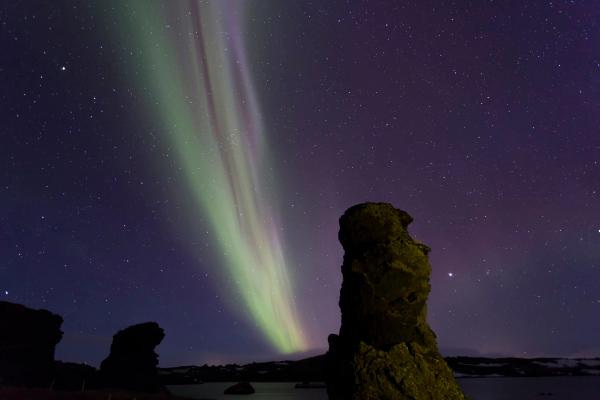
Conclusion
If you’re looking for the astonishing landscapes Iceland is known for, then you have to go to Lake Mývatn. Here, volcanic and geothermal forces have created a blend of elements that is simply amazing. It’s not just a stop—it’s a whole experience for anyone who’s up for something different.

